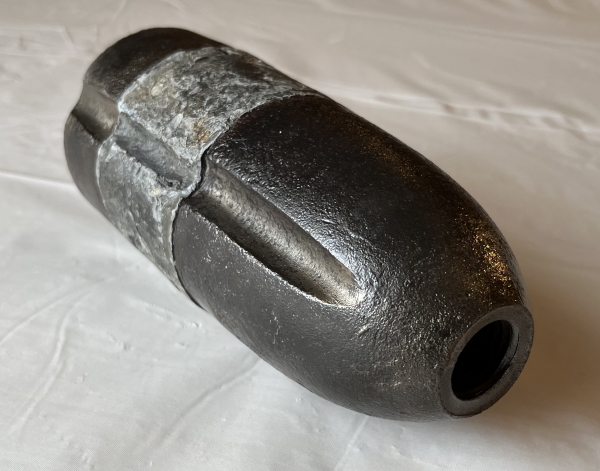
Find out about the 3 Inch Hotchkiss Shell on display by clicking/pressing the play button. Scroll down to view the images. You can follow along with the audio's script at the end of the page.

3-inch Hotchkiss Shell Replica on display
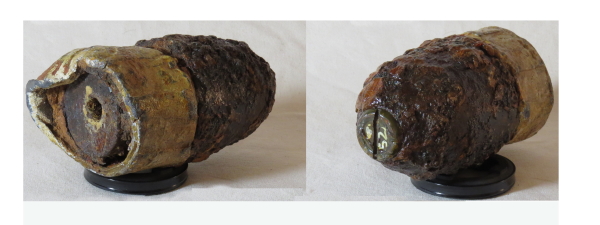
Hotchkiss 3" ordnance shell, fired and unexploded, discovered on the Big Blue Battlefield
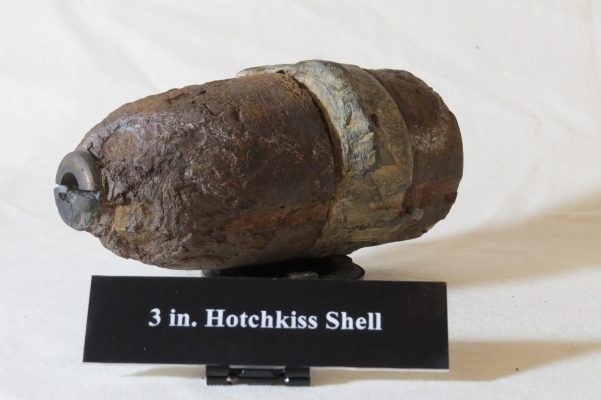
Hotchkiss 3" ordnance shell
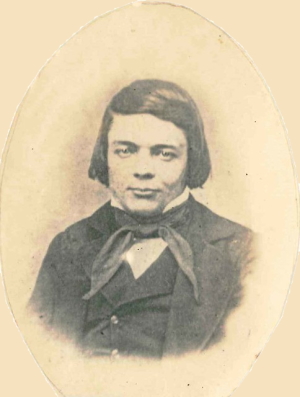
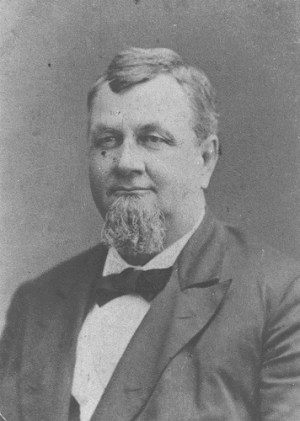
Andrew Hotchkiss and Benjamin B. Hotchkiss
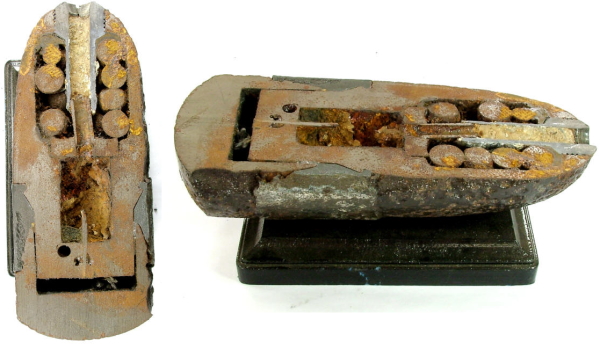
Cross section of 3 inch Hotchkiss Shell
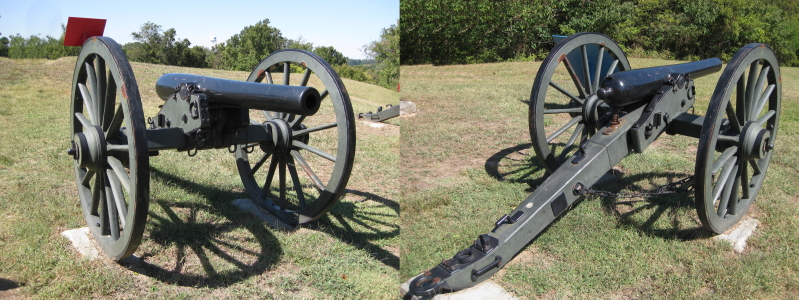
3 Inch Ordnance Rifle at Vicksburg National Military Park
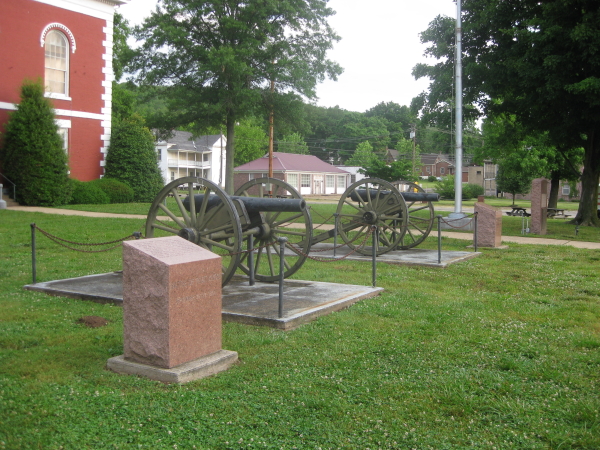
3 Inch Ordnance Rifles on Gounds of Iron County Courthouse
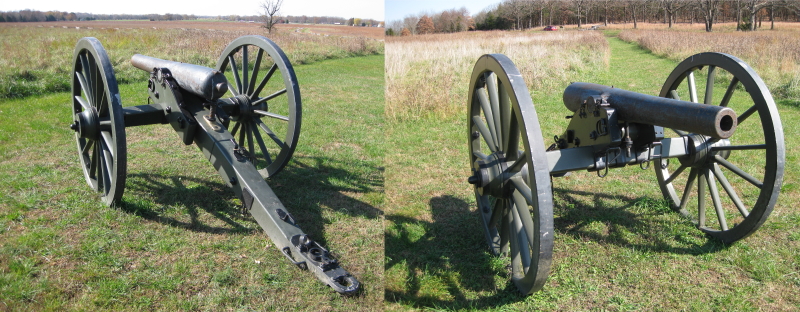
3 inch ordnance rifle at Pea Ridge National Military Park, front and rear
What you see in the display cabinet is a replica of the Hotchkiss Shell that was used in 3-inch Ordnance Rifles and 10-pounder Parrott Rifles during the Battle of Westport.
Before I describe this shell, let’s explain the basic types of field artillery projectiles used during the Civil War.
The first type was Solid Shot, typically used as a long-range battering ram against opposing artillery and horses. It consisted of a round iron ball for smooth bore artillery or a conical-shaped iron bolt for rifled artillery.
The second type was a Shell which exploded into pieces and was used as an antipersonnel weapon. A shell was hollow iron and filled with gunpowder. Some shell were also filled with smaller iron or lead balls. An integrated fuze caused the shell to explode.
The third type was Canister, essentially a large “tin can” filled with sawdust and many iron or lead balls. It was a relatively short-range antipersonnel weapon. When fired out of artillery, the can disintegrated and the balls spread out.
Although it looks like a single conical projectile, the 3-inch Hotchkiss Shell consisted of four separate components. The article on display is missing the fuze which would have screwed into the top of the shell. Then there is the nose section, the sabot, and the base cap. The shell component was hollow and contained the gunpowder and small iron or lead balls. The light-colored ring is the lead Sabot. The bottom of the Hotchkiss is the Base Cap. When fired, the base cap is pushed into the lead sabot which expands and engages the barrel’s rifling, causing the whole projectile to spin. After leaving the gun barrel, the sabot and base cap are designed to fall away and only the nose section keeps going toward the target. Andrew Hotchkiss patented this projectile design in 1855. Andrew died in 1858 but his brother Benjamin continued their work improving the design of the shell.
Although our replica does not show a fuze component, the Hotchkiss shells used on the Big Blue Battlefield used a timed fuze. These fuzes were ignited by the flame of the gunpowder charge that propelled the shell out of the barrel. Once the fuze burned down for the allotted time, it detonated the powder charge causing the nose section to explode into fragments. One of the improvements Benjamin Hotchkiss made in the shell’s design was the addition of “flame grooves,” shown on our replica. Hotchkiss added three of these so that flame from firing would pass through the sabot and more consistently ignite the fuze.
Hotchkiss shells have been found on the Big Blue Battlefield. They were probably fired from the guns in Capt. Charles H. Thurber’s Battery H, 2d Light Missouri Artillery. In his book, The Battle of Westport, Paul B. Jenkins refers to “Thurber’s Battery H of the Second Missouri Light Artillery, with its 3-inch Rodman rifled field-pieces.” Thomas Jackson Rodman was an ordnance specialist and US Army career officer who invented an improved was to cast artillery barrels. But none of the true Rodman guns were light or field artillery. The guns in Battery H and Battery L of the 2d Missouri Light Artillery were 3-inch Ordnance Rifles.
These guns were originally called Griffen Guns because they were designed by John Griffen Jr., the superintendent of the Phoenix Iron Works. The tube was made from wrought iron strips welded together using a special process invented by Griffen. The result was a lightweight, muzzle loaded gun tube. Over 1,000 were built by the Phoenix Iron Works in Phoenixville, Pennsylvania. The 3-inch Ordnance Rifle was the most widely used rifled gun during the Civil War and was very reliable. During testing by the US Army Ordnance Department, Griffen challenged them to intentionally burst the gun. They were unsuccessful after firing 500 rounds. Only after loading with seven pounds of gunpowder (one pound was the normal powder charge) and completely filling the tube with 13 shells did the gun burst at the muzzle. There is only one reported case of a 3-inch Ordnance Rifle bursting in action during the war. In contrast, another widely used rifled gun, the 10-pounder Parrot, had numerous instances where the barrel burst during action. Indeed, during the fighting south of Brush Creek on October 23, 1864, one of the Parrots in Collins’s Battery burst in action.
Bell, Jack. “Hotchkiss.” In Civil War Heavy Explosive Ordnance: A Guide to Large Artillery , Torpedoes, and Mines. Denton, TX: University of North Texas Press, 2003.
Hazlett, James C., Edwin Olmstead, and M. Hume Parks. Field Artillery Weapons of the Civil War. Urbana, IL: University of Illinois Press, 2004.
Jenkins, Paul B. The Battle of Westport. Kansas City: Franklin Hudson Publishing Co., 1906.
Swain, Craig. “Bullet Shells? Why Not Case Shot? Hotchkiss Projectiles, Part 3.” To the Sound of the Guns (blog), September 14, 2016. Link.
———. “Hotchkiss Projectiles, Part 2 – Canister.” To the Sound of the Guns (blog), May 31, 2016. Link.
———. “Improved Case Shot ‘Discharged in the Line of Flight’: Hotchkiss Projectiles, Part 4.” To the Sound of the Guns (blog), October 31, 2016. Link.
———. “Ordnance Geniuses: The Hotchkiss Brothers and Their Projectiles, Part 1.” To the Sound of the Guns (blog), May 23, 2016. Link.
Wikipedia. “3-Inch Ordnance Rifle,” December 25, 2021. Link.
Wikipedia. “Benjamin B. Hotchkiss,” January 21, 2022. Link.